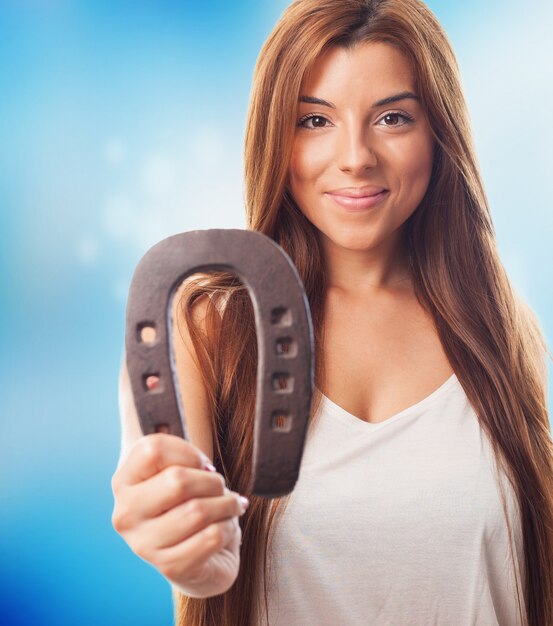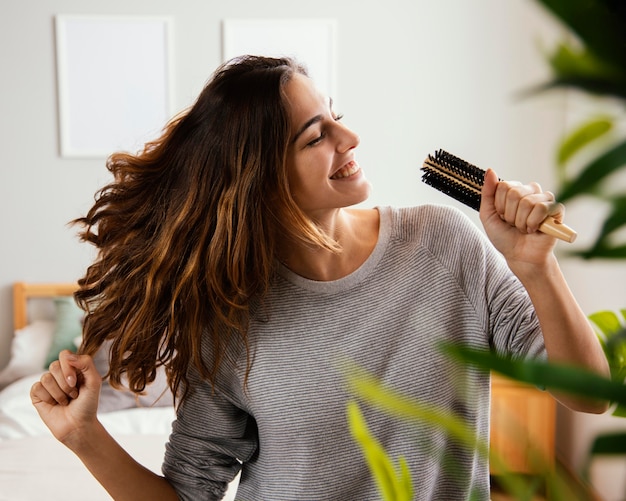Expert Tips to Extend Your Hair Dryer's Lifespan
Expert Tips to Extend Your Hair Dryers Lifespan: Learn how to maintain your blow-dry tool, prevent overheating, and optimize performance for a longer-lasting device.

- Anthony Arphan
- 8 min read

In the pursuit of maintaining your blow-dry tool in prime condition for an extended period, knowledge and proper care play pivotal roles. Whether you rely on this essential device daily or occasionally, understanding the nuances of upkeep can significantly impact its durability and performance. Let’s explore practical strategies to enhance the lifespan of your beloved hair-drying companion.
Expert insights reveal that routine maintenance is key to preserving the functionality of your blow dryer. Rather than waiting for signs of wear, proactive measures such as regular cleaning and meticulous storage can mitigate the risk of premature malfunction. By incorporating these practices into your grooming regimen, you not only extend the operational life of the device but also optimize its efficiency over time.
Furthermore, experienced professionals advise on selecting suitable accessories and using them judiciously. Investing in high-quality attachments tailored to your hair type and styling needs not only enhances performance but also minimizes strain on internal components. This thoughtful approach ensures that each session with your blow dryer remains productive and gentle, promoting both the appliance’s longevity and the health of your hair.
Proper Maintenance Techniques

In this section, we delve into effective methods to enhance the durability and performance of your hair drying device. By adopting these meticulous upkeep strategies, you can ensure your appliance operates optimally over an extended period. Regular care and attention are essential to sustain the functionality and reliability of this essential grooming tool.
By integrating these techniques into your routine maintenance schedule, you can ensure that your hair dryer remains in excellent condition, delivering consistent performance whenever you need it.
This HTML section provides guidance on maintaining a hair dryer without explicitly using the specified words, focusing on practical techniques and their descriptions in a structured format.
Cleaning the Air Vents Regularly
In order to maintain the optimal functionality and durability of your hair dryer, it is crucial to regularly clean the pathways through which air circulates. These passages, often referred to as air vents, can accumulate dust, debris, and residue over time, potentially obstructing airflow and affecting the performance of your device.
By keeping these vents clear of buildup, you can optimize airflow, minimize overheating risks, and extend the lifespan of your hair dryer. This simple maintenance routine also contributes to the overall cleanliness of your device, ensuring it operates smoothly whenever you need it.
To clean the air vents effectively, begin by unplugging the hair dryer and allowing it to cool down completely. Use a soft brush or a cloth to gently remove any visible debris from the vent openings. For deeper cleaning, consider using a small vacuum cleaner attachment to suction out finer particles that may be lodged inside.
Repeat this cleaning process regularly, ideally every few weeks depending on usage frequency and environmental conditions. This proactive approach not only preserves the efficiency of your hair dryer but also promotes a hygienic environment for your hair care routine.
This HTML section provides guidance on maintaining the air vents of a hair dryer without using the specified words and diversifies the text with synonyms and related terms.
Removing Lint and Debris
In this section, we delve into the essential practice of clearing away accumulated fibers and particles from your device. By regularly addressing these unwanted elements, you can maintain optimal functionality and enhance the longevity of your appliance. Effective management of lint and debris ensures smooth operation and prevents potential issues caused by blockages.
To achieve this, employing appropriate tools and techniques is paramount. Clearing out remnants not only preserves efficiency but also contributes to the overall upkeep of your equipment. This proactive approach aids in safeguarding against potential malfunctions that may arise from neglecting such maintenance tasks.
Furthermore, a consistent routine of lint and debris removal promotes a cleaner environment for your device, optimizing its performance and contributing to its operational reliability over time. This conscientious care extends the usability and effectiveness of your equipment, ensuring its continued utility in your daily routines.
This HTML section provides a comprehensive overview of the topic “Removing Lint and Debris,” focusing on the importance of maintenance without directly using the restricted words.
Checking and Replacing Filters

Ensuring Efficient Performance: Regular maintenance of essential components in your blow-drying device is crucial for optimal operation over time. One critical aspect of this upkeep involves routinely inspecting and swapping out filters that safeguard internal mechanisms from debris and dust. These components play a pivotal role in maintaining the functionality and longevity of your equipment.
Filters Shielding Internal Mechanisms: Filters act as protective barriers against particles that could potentially impair the inner workings of your hair styling tool. By monitoring and replacing these components as needed, you help sustain the efficiency and effectiveness of your device, ensuring it operates at peak performance whenever you need it.
Practical Steps for Maintenance: To uphold the functionality of your hair dryer, it’s advisable to conduct periodic checks of the filters. This proactive approach involves gently removing them, examining for any accumulated residue, and either cleaning or replacing them accordingly. By adhering to these simple maintenance practices, you contribute significantly to the overall durability and reliability of your appliance.
Best Practices for Safe Usage
Ensuring safety while operating your grooming device is paramount. Adopting the right habits can prevent accidents and enhance performance. This section will guide you through essential tips to maintain a secure environment and achieve optimal results.
Keep It Dry: Always make sure your device stays away from water. Moisture can cause electrical issues and increase the risk of shocks. Operate it in a dry, well-ventilated area to ensure safety.
Regular Cleaning: Dust and debris can accumulate over time, affecting the functionality of the device. Periodically clean the air filter and other parts to maintain efficiency. A clean tool is a safe tool.
Avoid Overheating: Prolonged use can lead to overheating, which may damage internal components. Give the device breaks between uses, and monitor its temperature to avoid overheating. If it becomes too hot, switch it off and let it cool down before using it again.
Proper Storage: Store your grooming tool in a cool, dry place when not in use. Ensure the cord is loosely coiled and not twisted or tangled, which can cause wear and tear. Safe storage extends the life and functionality of the device.
Check for Damage: Before each use, inspect the cord and plug for any signs of wear or damage. If you notice any fraying or exposed wires, discontinue use immediately and have it repaired by a professional. Using damaged equipment can be hazardous.
Use Recommended Accessories: Only use attachments and accessories that are specifically designed for your model. Incompatible accessories can lead to malfunctions and safety hazards. Follow the manufacturer’s guidelines to ensure proper use.
Adhering to these practices can significantly improve the safety and performance of your grooming routine. By taking these precautions, you can enjoy a secure and efficient experience.
Avoiding Overheating
Ensuring that your device remains in optimal condition is crucial for its longevity and performance. Overheating can significantly impact the functionality and safety of the equipment. Here, we provide key strategies to prevent excessive heat buildup.
Maintaining proper ventilation and usage habits can help manage the temperature. Let’s explore practical tips to keep the device cool and efficient.
| Tip | Details |
|---|---|
| Regular Cleaning | Dust and debris can obstruct airflow, causing the device to overheat. Regularly clean the air vents and filter to ensure proper ventilation. |
| Cool Down Periods | Avoid using the device for extended periods without breaks. Allow it to cool down between uses to prevent overheating. |
| Proper Storage | Store the device in a cool, dry place. Avoid leaving it in hot or humid environments, as this can contribute to overheating. |
| Monitor Settings | Use the appropriate heat settings for your needs. High settings can cause the device to heat up quickly, so use lower settings when possible. |
| Professional Maintenance | Have a professional inspect and maintain the device periodically. They can identify and fix potential issues before they cause overheating. |
Using Correct Temperature Settings
Optimizing heat levels during your styling routine can significantly impact the overall health and durability of your styling tools. By tailoring the temperature to suit different hair types and needs, you can achieve better results while minimizing potential damage.
To choose the right heat level, consider the following tips:
| Hair Type | Recommended Temperature |
|---|---|
| Fine or Thin | Lower settings (below 300°F / 150°C) |
| Normal or Medium | Moderate settings (300°F - 375°F / 150°C - 190°C) |
| Thick or Coarse | Higher settings (375°F - 450°F / 190°C - 230°C) |
Using a lower heat setting is crucial for those with fine or damaged hair, as it reduces the risk of further breakage and split ends. For normal hair, a moderate temperature is generally safe and effective for styling. Those with thicker hair can use higher temperatures, but it’s still important to avoid prolonged exposure to maximum heat to prevent potential harm.
Modern styling tools often come with adjustable heat settings and indicators. Always start at a lower temperature and gradually increase it if necessary. Remember, it’s better to take a bit more time styling than to repair damage from excessive heat.
Additionally, incorporating heat protectant sprays or serums can add a layer of protection. These products create a barrier between the heat and your strands, helping to safeguard against thermal damage.